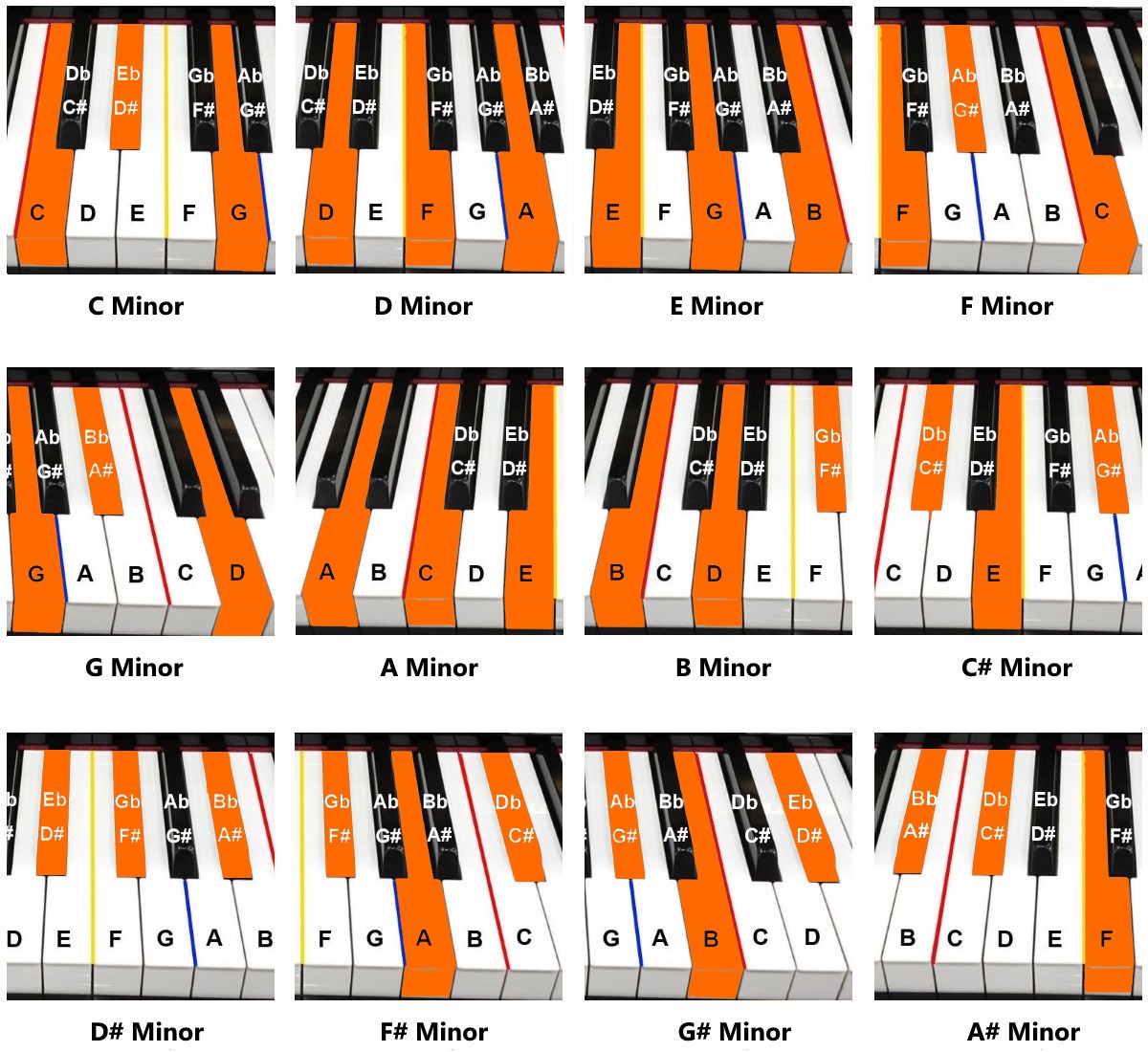

A minor triad is represented by the integer notation : Missing or empty |title= ( help) In harmonic analysis and on lead sheets, a C minor chord can be notated as Cm, C−, Cmin, or simply the lowercase "c". This good-time staple uses: Cm7, Dbmaj7, Bbm7, Ab/C, F7, E9sus4, Gb/Bb, and. A minor triad has a minor third (m3) on the bottom, a major third (M3) on top, and a perfect fifth (P5) between the outer notes. Just because a song uses minor chords doesnt mean it has to be dark and brooding. For example, C is suitable for ballads and Eb can sound a bit like Bach.Audio playback is not supported in your browser. Preferable is to play chords with your left hand and notes from the scale with your right ( more on improvisation).Īn interesting thing is that different major scales have their own “sounds”. To explain further: you can play chords like C, Em, F, G and Am together with the C Major Scale.
#All minor chords piano how to
How to Build a Minor Chord There are a couple ways to build minor chords: Play the first, third, and fifth notes of the matching minor scale or. Minor chords add a unique depth to music. See harmonizing major scales into chords.Īn easy way to start improvising on the piano is to play major scales together with the chords that use the same notes. Julie Swihart Minor Chords Let’s look at how to build minor chords on the piano. In the key of C, for instance, the standard chords being used are: That is because you can randomly choose three different notes from a scale and you will get a triad. Scales and chordsĪs soon as you know a certain major scale, you can easier grasp the chords in the same key. This is because the notes below the diagrams are foremost thought to be easy to understand. Also, the notes in the diagrams and the notes in the overview below sometimes differ.

F#) that can look peculiar, see theory for an explanation. In some cases, there are double-sharps (e.g. As an example, C#, D#, E#, F#, G#, A#, B#, C# and Db, Eb, F, Gb, Ab, Bb, C, Db (as in C# / Db scales) are the same notes but partly written differently. The notes are, however, the same on the keyboard. C# and Db), because they can be played in two different keys. Some of the scales have two names divided by a slash (e.g. The nature of the intervals labels the Major Scale as a diatonic scale. This helps you a lot until you have memorized all the scales and vice versa: you don’t need to memorize them if you know the intervals. These are always the same for scales in a specific category. But more importantly, the notes on the fretboard. The intervals and steps are important to learn. Chords (Triads) Major Triad, 1 3 5, 1 to 3 Maj 3rd 3 to 5 Min 3rd, C E G, C or C Minor Triad, 1 3 5, 1 to 3 Min 3rd 3 to 5 Maj 3rd, C E G Cm. all the major chords, minor chords, and dominant sevenths chords. The Major scales in graphic compilation are available in the member area.Ī collection of keyboard charts can be downloaded as a PDF-file. Further extended chords can be formed by continuing this process, giving us 11th and 13th chords. Click on a chord below to show it on the piano and. The three most important chords, built off the 1st, 4th and 5th scale degrees are all minor chords (A minor, D minor, and E. The chord itself is often abbreviated as Cm13. You can see these notes highlighted in the interactive piano chart below. Minor keys, along with major keys, are a common choice for popular music. The C minor thirteenth chord is a 6 -note chord consisting of the notes C, Eb, G, Bb, D and A. they could be at opposite ends of a piano. It is the most popular key among Minor keys and the 7th most popular among all keys. This hi-res digital poster includes all Major scales, but also all Minor scales together with major and minor chords. It also includes a chord formula list of all the basic chord types and more.


 0 kommentar(er)
0 kommentar(er)
